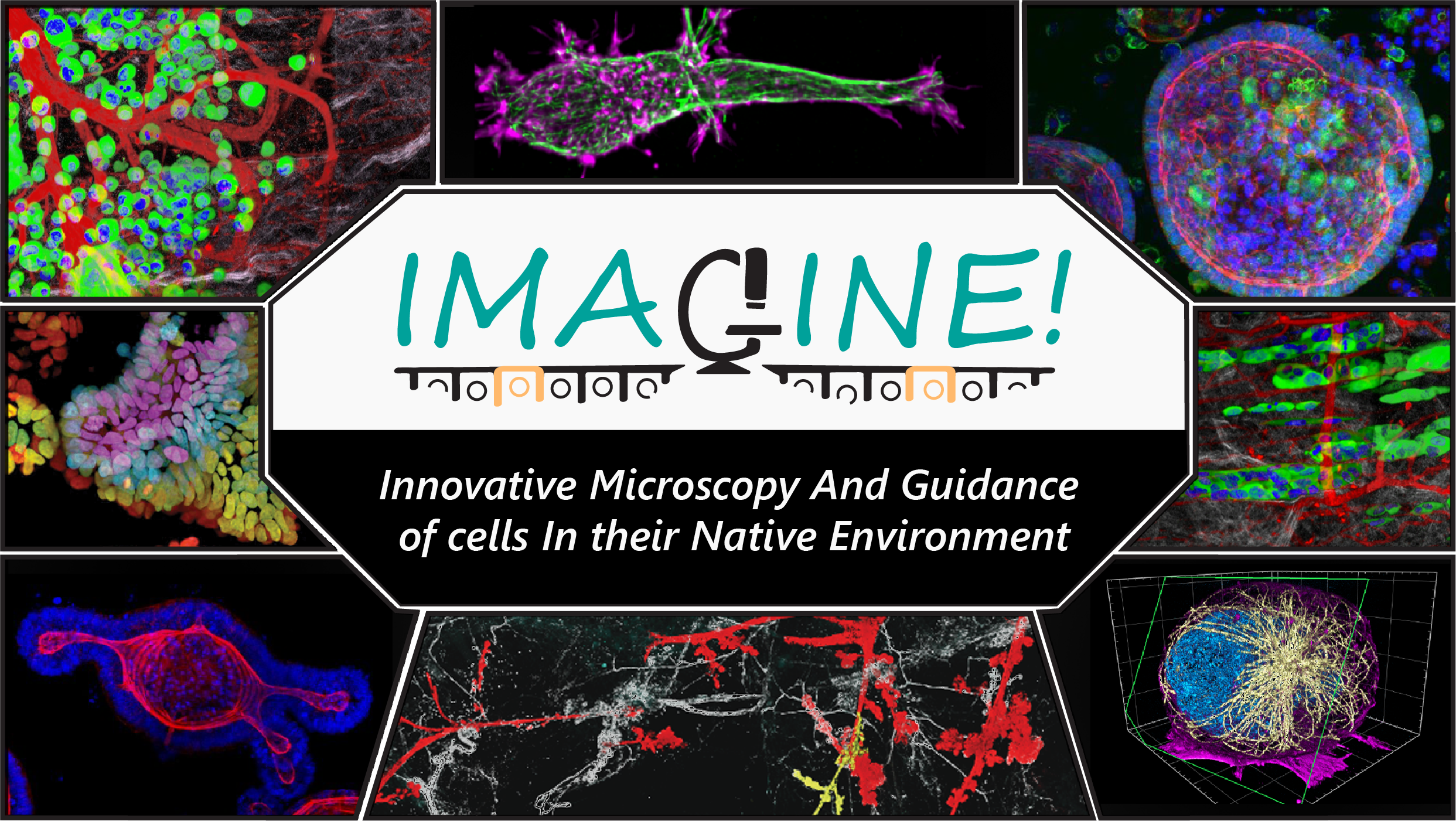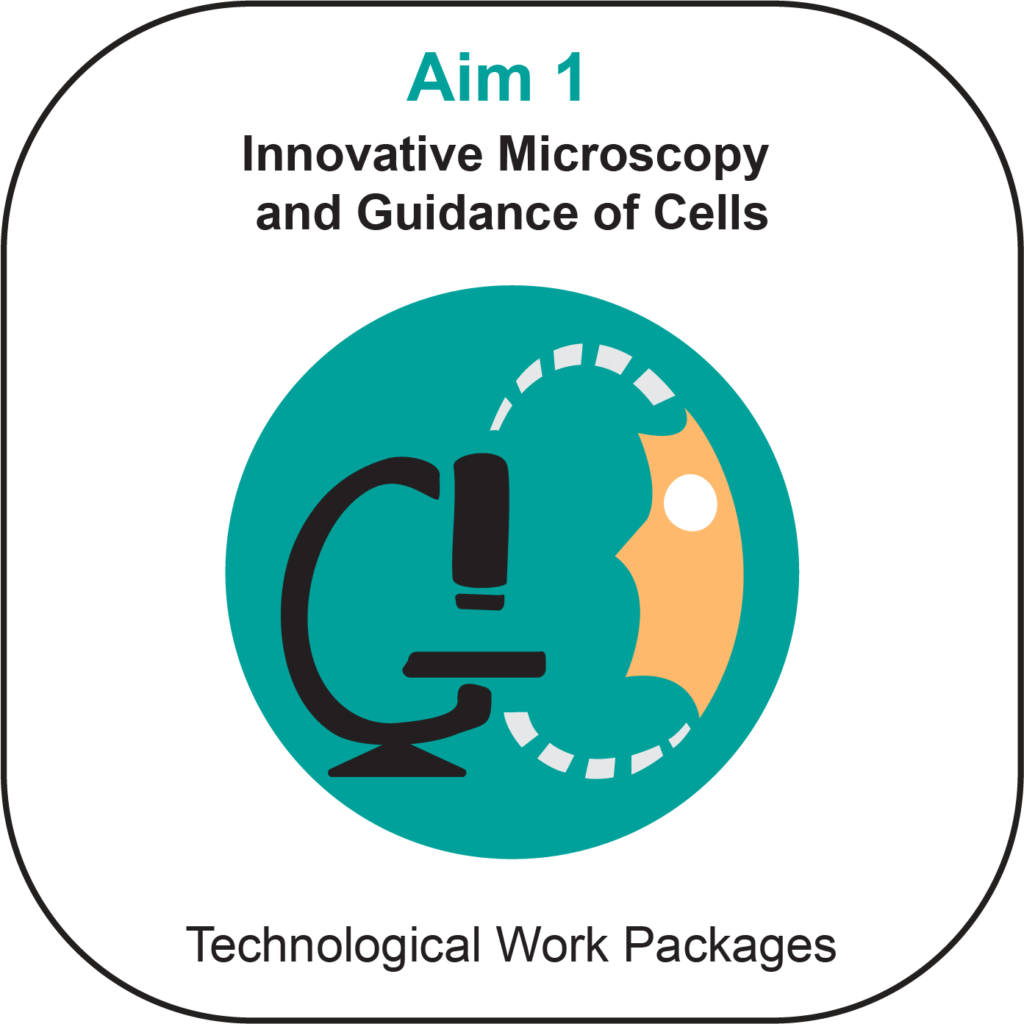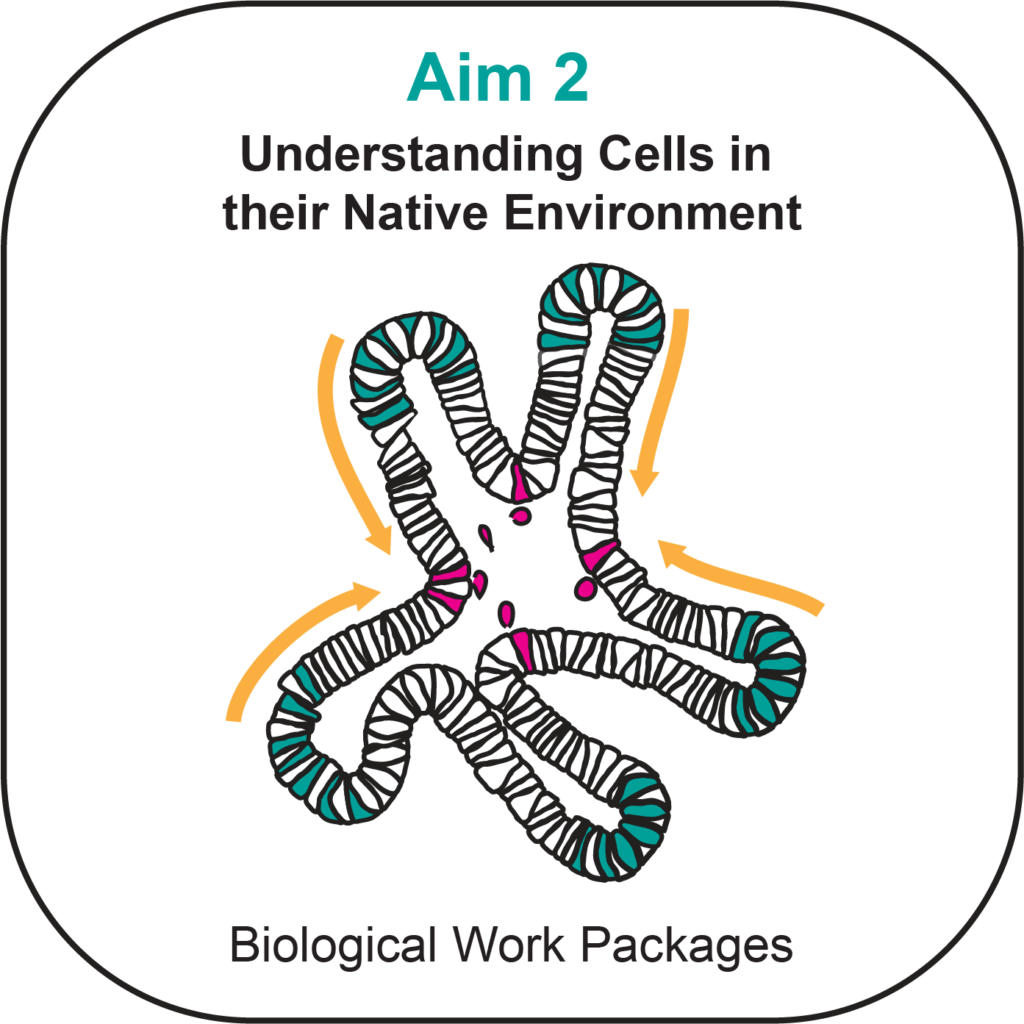Motivation
Understanding how molecular building blocks self-organise to form specialised cells and how these cells self-organise to form complex tissues represents a major outstanding challenge in life sciences. Light microscopy of living cells and tissues is crucial to address this challenge, as it provides unique information on cellular organisation and dynamics. Until recently, most of our knowledge on the molecular mechanisms that govern mammalian cell architecture and behaviour came from studies of immortalized and uniform cells grown in Petri dishes.
Such cultures are easy to handle, relatively cheap and allow imaging at high spatial and temporal resolution to reveal cellular organisation and dynamics. However, cells in these simple cultures lack the cellular and molecular interactions that determine the self-organisation into functional 3D tissue architecture, including cell fate, self-renewal, migration and differentiation. Due to the difficulty of probing dynamic molecular processes in three-dimensional tissues in vivo, many fundamental aspects of mammalian tissue cell biology have remained poorly understood.
Changing the Cell Biology landscape
IMAGINE! will transform cell biology by developing and applying advanced microscopy and real-time molecular manipulation techniques to study cells in their native environment. IMAGINE! will deliver technological innovations and set new standards for in vivo cell biology. We will make large strides in understanding molecular mechanisms of mammalian tissue formation and homeostasis and in vivo disease mechanisms. As such, our programme will contribute to global efforts on tissue engineering for regenerative medicine by developing a toolbox to steer cell fate and behaviour. Furthermore, dissecting the in vivo mechanisms underlying drug action and off-target drug activities will open new windows to optimise therapies, reduce or predict side effects, fight resistance, develop personalised medicines and provide mechanistic rationales for drug repurposing. Finally, our studies will enable benchmarking tissue culture systems for medical research and will help to reduce animal experiments.
We will achieve our aims by focusing on 5 work packages that cover both technological (Aim 1) and biological advances (Aim 2).


